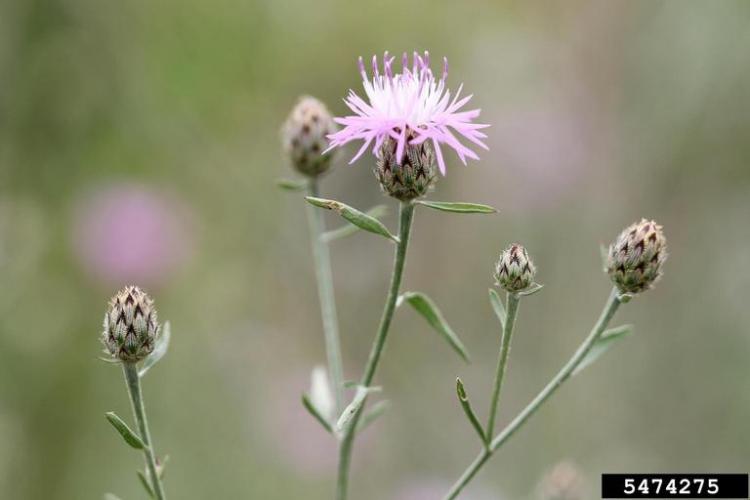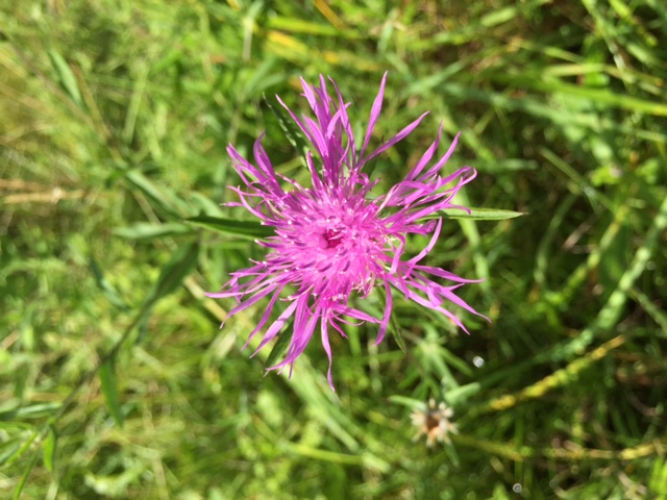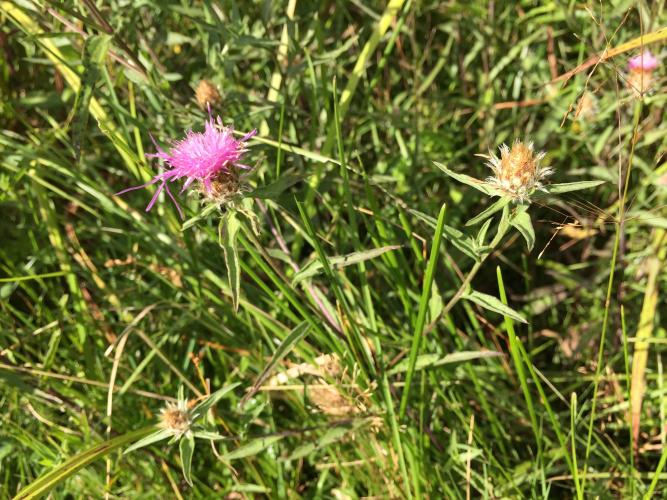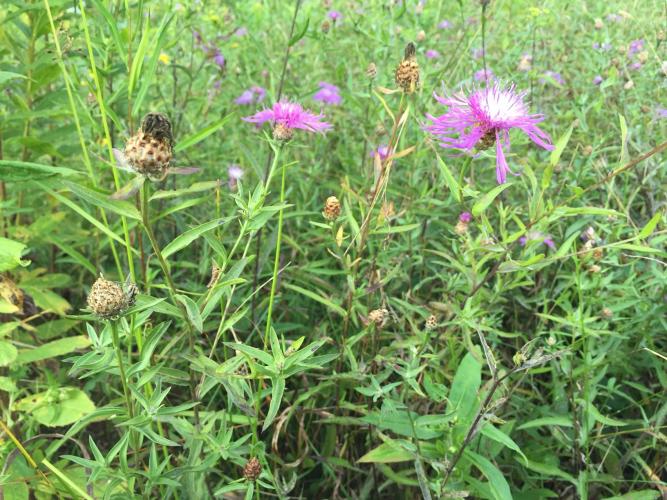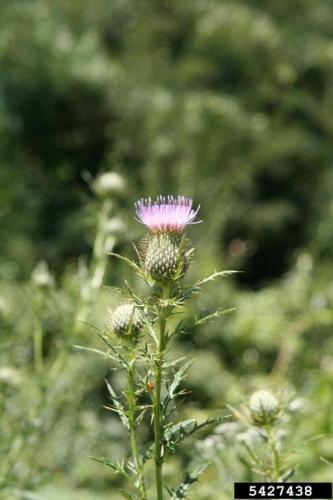Spotted knapweed
Identification
Appearance
Centaurea stoebe is a bushy, winter-hardy, upright perennial forb living 3 - 5 years or sometimes longer, with a deep taproot.
Foliage
Rosette leaves bluish green, hairy and covered with shiny specks interspersed with translucent dots, 4-8 inches long. The size of the leaves decrease in size above the middle of the stem. They are alternate, spiraling and jutting out and upward. Basal leaves deeply divided into elliptic or linear lobes. Lobes become more slender and fewer on upper leaves.
Flowers
Flowers from June-November. Each branch topped by an egg-shaped flower bud covered with overlapping rows of dry, fringed green bracts with black tips. Bracts eventually part at top to allow a constricted pinkish-to-lavender thistle plume to radiate out and up, 0.75-1 inch wide and overall about 1 inch long.
Fruit
Fruits appear from June-February. Tightly packed seed heads of oblong, brownish, hairy nutlets (achenes), 0.1 inch long, topped by short stubby bristles. A thousand seeds can be produced per plant.
Biology
ECOLOGICAL THREAT
Knapweeds have the potential to rapidly spread throughout introduced areas, displacing native vegetation and reducing the amount of available forage for wildlife and livestock. They may also degrade soil and water resources by increasing erosion and surface runoff.
Centaurea stoebe rapidly colonizes roadsides and disturbed lands, especially dry sites. It can invade adjacent undisturbed prairies and open forests. A severe invasive species spreading into the South by seeds equipped for dispersal by wind, water, livestock, wildlife, and human activity, with viability in the soil for many years.
ORIGIN
These species are native to Europe and Russia. No one is sure when brown knapweed (C. jacea) was introduced to North America. Black knapweed (C. nigra) and spotted knapweed (C. stoebe) were introduced in the late 1800s.
HABITAT
Meadows, fields, disturbed areas
LIFE CYCLE
These herbaceous plants are either biennial or perennial with pink to purple flowers that are roughly half an inch across and resemble small pineapples. They flower from June through October. Plants grow one to four feet high. They typically form a basal rosette of leaves in the first year and flowers in subsequent years. Individual plants can live up to nine years.
Vermont Distribution
Citations
PHOTO CREDIT
Warren King, Vermont, Spotted knapweed flower, seeding, and height
Spotted Knapweed, 5474275, Rob Routledge, Sault College, CC by 3.0
Field Thistle, 5427438, Chris Evans, University of Illinois, CC by 3.0
INFORMATION CREDIT
Video: University of Wisconsin Extension
